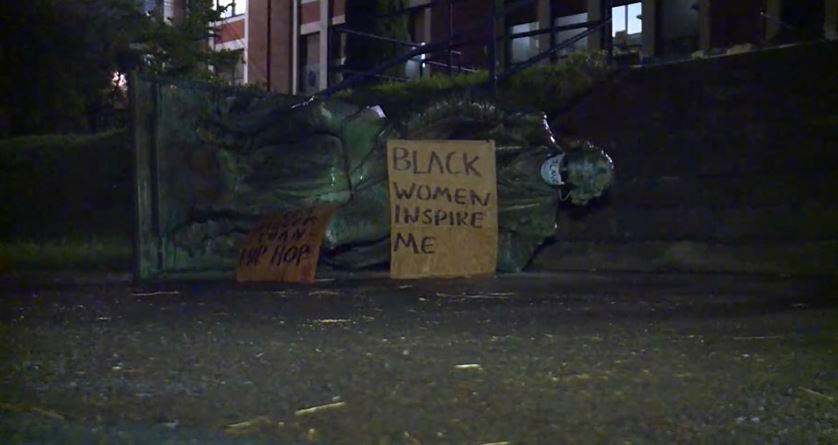PORTLAND, Ore. (KOIN) – The city of Portland is about to launch an arts and culture planning process that will determine the fate of the statues that were toppled in 2020 and 2021.
During the social justice uprising of 2020, several groups protested against colonization, systemic racism and injustices toward Native Americans. In demonstrations across the United States, groups pushed over busts of known slaveholders and spray painted the bronze faces of Confederate leaders.

In Portland, demonstrators toppled bronze statues of Abraham Lincoln, George Washington, Theodore Roosevelt and Thomas Jefferson. They also pushed over a statue of former Oregonian editor Harvey Scott, who was known to oppose women’s suffrage, on Mount Tabor.
In 2021, someone unseated the statue that replaced Scott on Mount Tabor. A bust of York, a Black man who’d been enslaved on the Lewis and Clark expedition, was found torn from its pedestal.
The city also decided to remove the downtown elk statue in 2020 after fires set by protesters had damaged its base.
On Oct. 3, the Portland Parks Foundation shared its feasibility study and preliminary cost estimate for restoring and reinstalling the Thompson Elk Fountain.

The project is expected to cost $2 million and involves making upgrades to nearby streets.
So far, the city does not know what will happen to the other toppled statues.
Jillian Schoene, Portland Commissioner Carmen Rubio’s chief of staff, told KOIN News the city is about to launch an arts and culture planning process and determining what will happen to the statues is one part of the process.
Schoene said it’s a comprehensive planning effort and will not focus only on monuments.
The city recently hired the vendor for the work and the vendor is working with the Portland City Arts Program on the plan and timeline.
“The city is interested in a discussion around naming/renaming of public assets and designations as part of that process. But again, monuments is just one piece,” Schoene wrote.
She said the public process for the toppled statues still needs to be designed and will likely run parallel to the planning efforts. She expects it will require a robust community discussion that will be informed by history and the events that took place in recent years.
